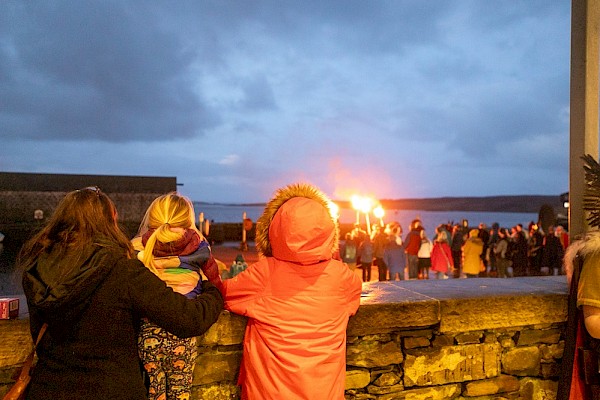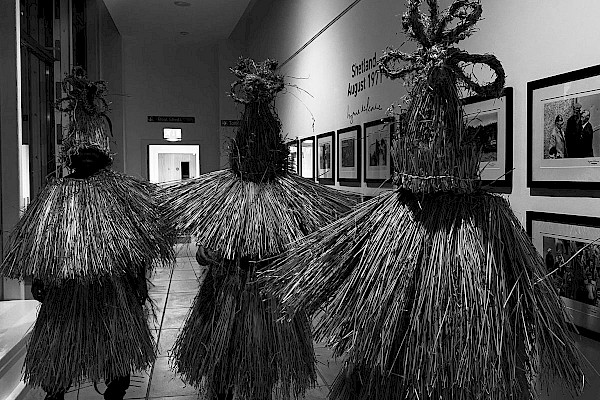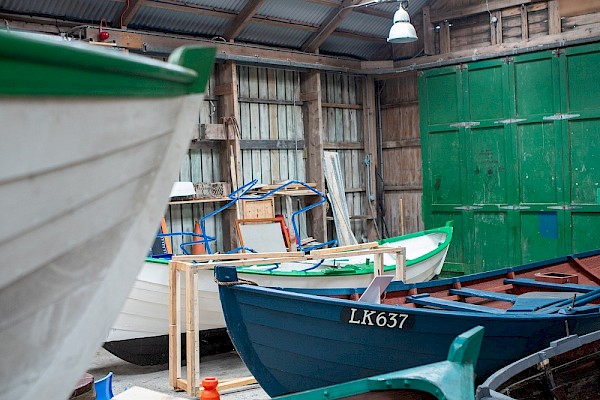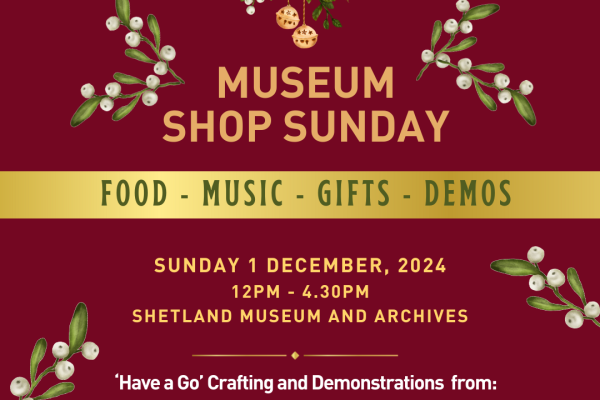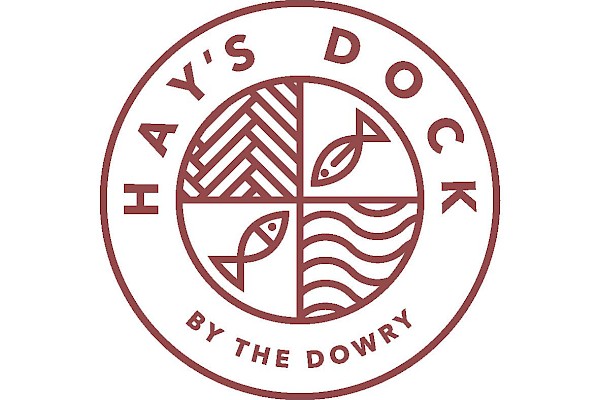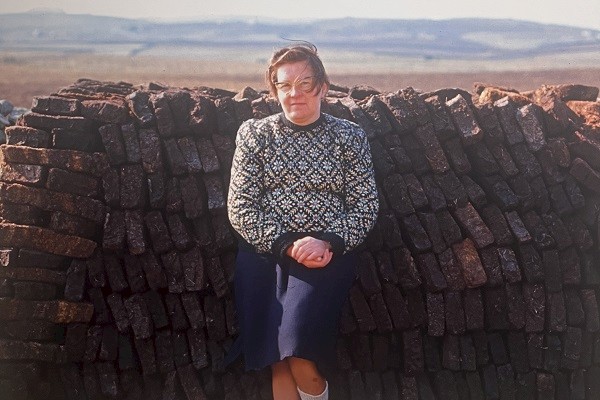Be My Valentine
It’s that time of year, Valentine’s Day, the 14th of February. There’s more than one martyred St Valentine, Valentine of Rome and Valentine of Terni, to name but two, along with a legend that one Valentine was prepared to marry Roman soldiers who were allegedly forbidden to do so. Historically, the 14th of February has been associated with the advent of spring. However, since the 1400s the day’s association with romantic love has overwhelmed all other traditions, and it’s usually expressed with a present, a letter, or most often by a card. The latter has been used to express various things apart from love and warmth, including longing, hope, cheek, and the odd barb.
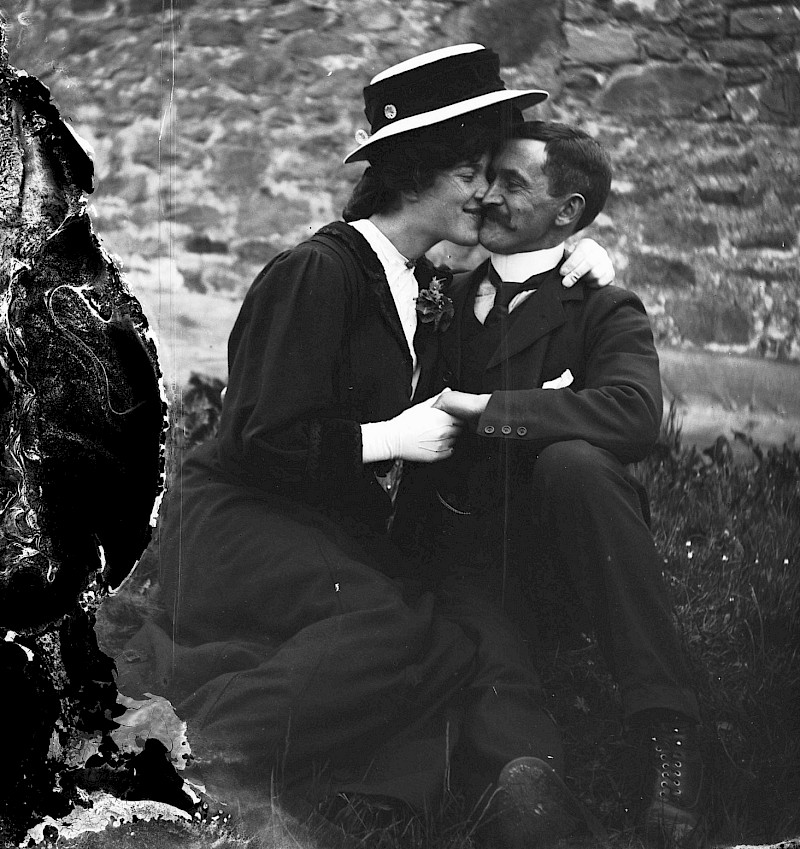
By the end of the 1700s people in Britain generally were sending Valentines, often on plain paper. Some publications offered to make it less plain, filled with suitable verses and advice. Then the industrial revolution came, and more elaborate and affordable cards, and the penny post in 1840 poured fuel on the fire. But what of Shetland?
In the archives catalogue references to Valentines are few. Entries for the romantic meaning are fewer still, and most are to the surname “Valentine.” The Shetland Times of March 1 1875 thought the Valentine era had gone – It is very doubtful if anything like a real valentine is ever sent now – and added that much of what was sent didn’t have the redeeming quality of being funny. By the 27 February 1909 a writer was lamenting – I wonder how many readers of this column can remember the days when valentines were in full vogue? The Shetland News of 20 February 1919 had Thomas Manson noting – … we have grown out of the sending of Valentines on Valentine’s day, which by the way, was last Friday.
Shetland wasn’t alone in this, other Scottish newspapers remarked on it too. St Valentine’s Day had stopped growing and had become a less widespread habit. Although we might think of the Victorian approach being universally and deeply sentimental, some people saw other opportunities. They provided an antidote – the Vinegar Valentine. Originating in the USA, the verses were often uncomplimentary, and if sent from a man to a woman, sometimes getting well over the boundary into misogyny. Analogue trolling. Of course, valentines are anonymous. Well, in theory, and anonymous is often a challenge in Shetland anyway. The vinegar cards are probably what the writer in da paper meant about not being funny.
Things changed in the 1950s, and the Scotsman newspaper, 7 February 1955, remarked that – St Valentine seems to be enjoying a lively revival as the patron saint of lovers. Shetland was certainly getting in on the act by February 1958, with the Shetland Times Shop advertising Valentine’s Day and a “Huge Selection of Cards in Stock.” February 1963 boasted a St Valentine’s Dance in Scalloway Public Hall with music by the Midniters, and you could potentially change your entire life for an admission price of three shillings. Even the Shetland Liberal Association had a Valentine Whist Drive in the same month.
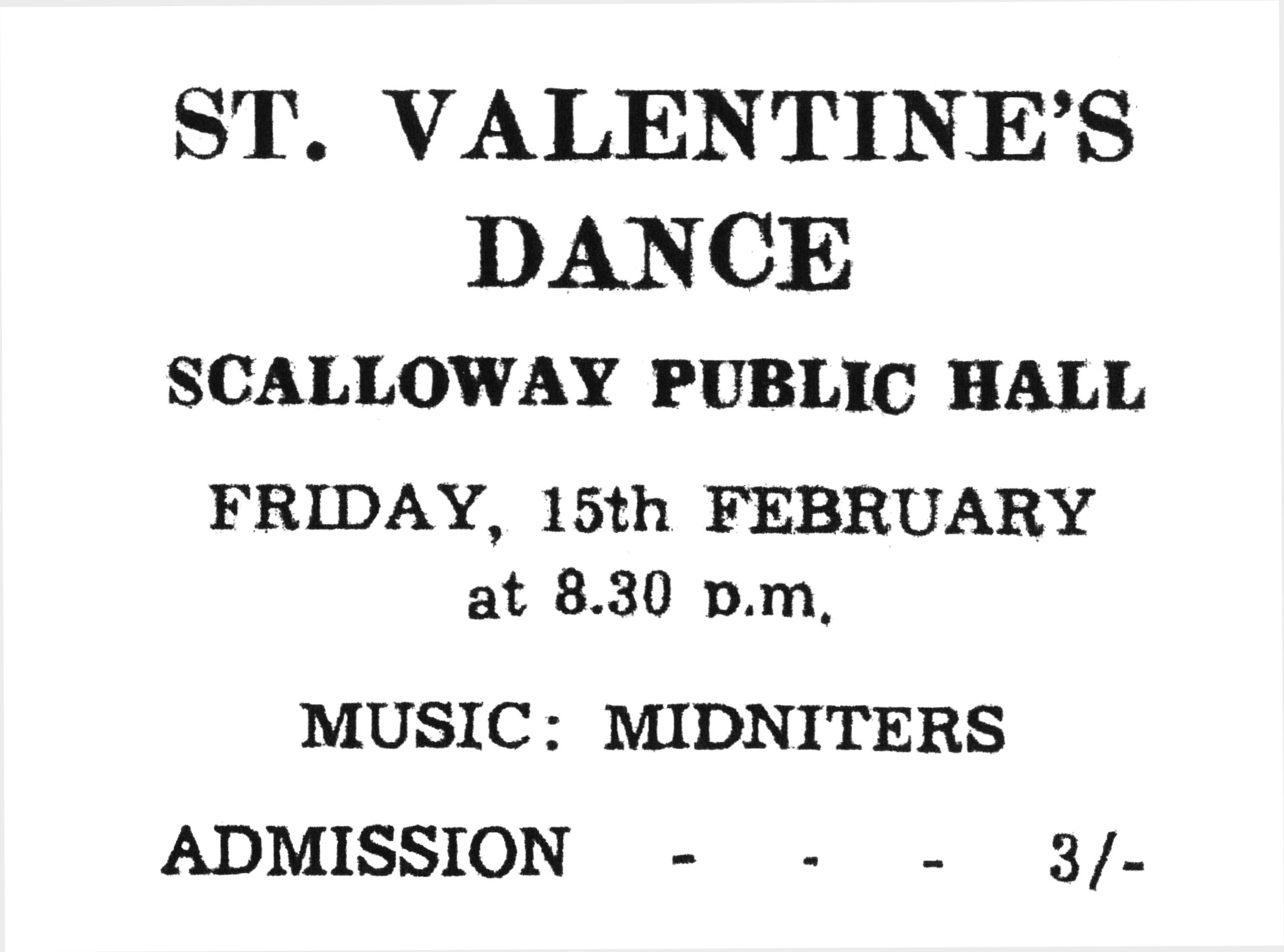
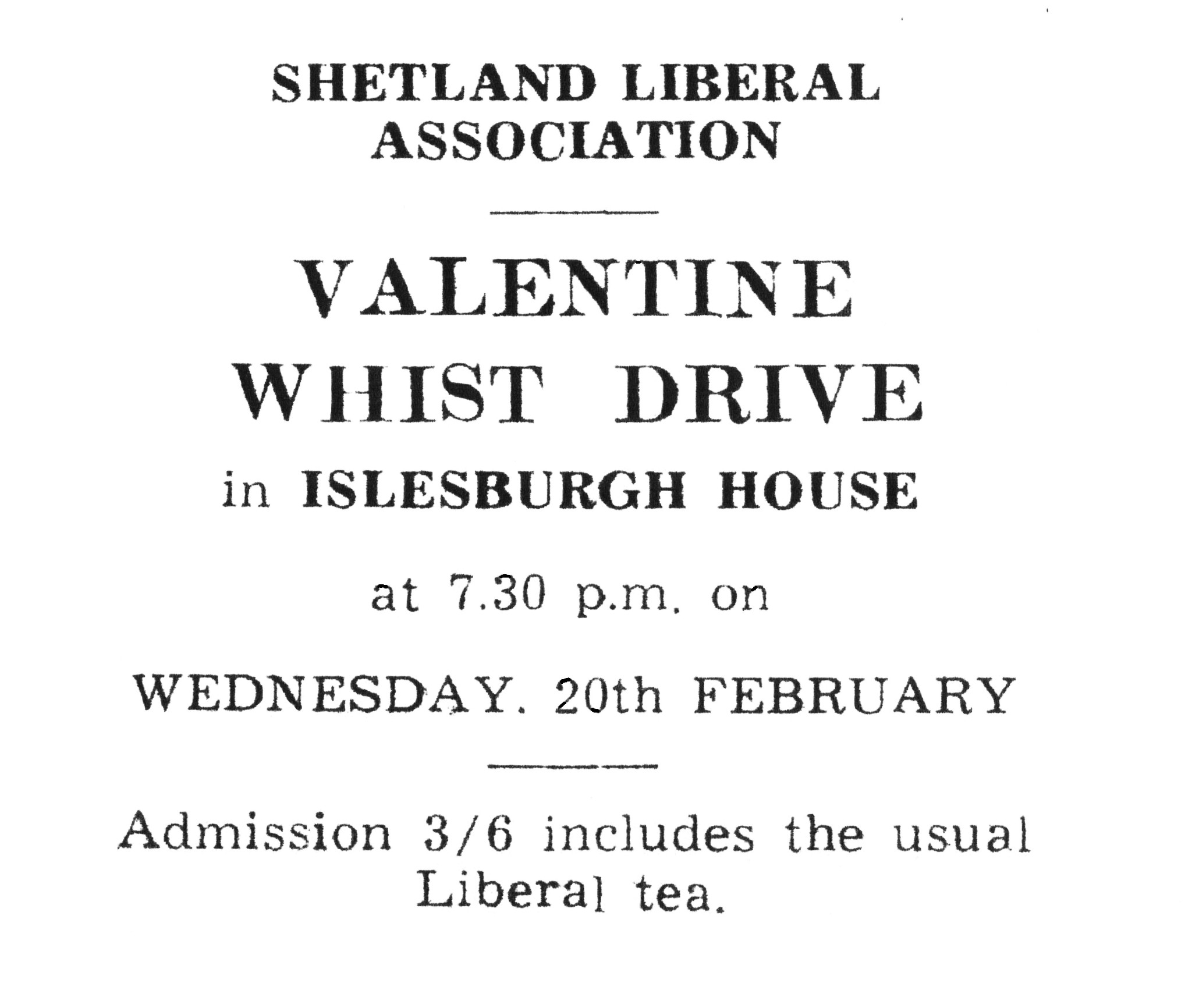
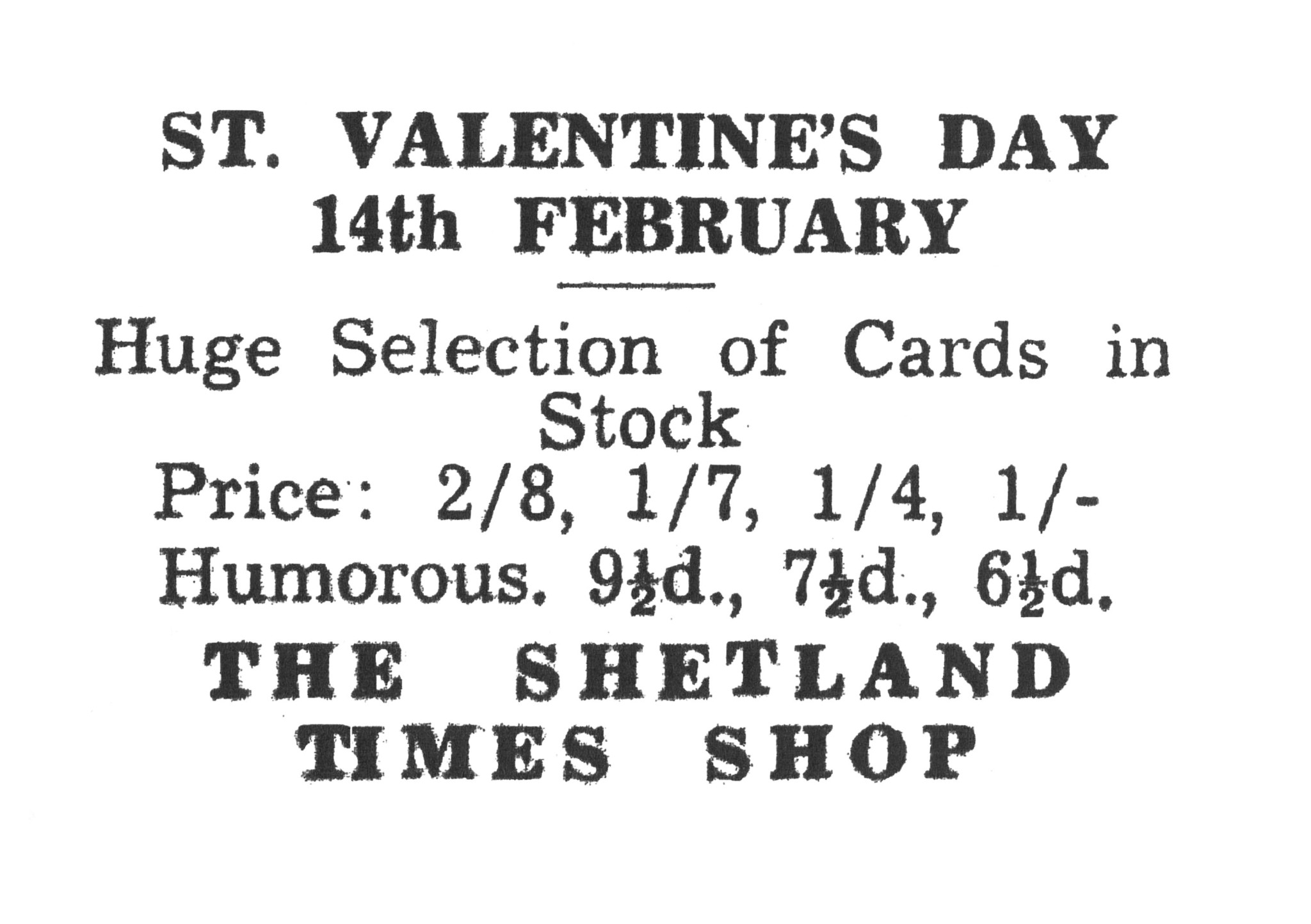
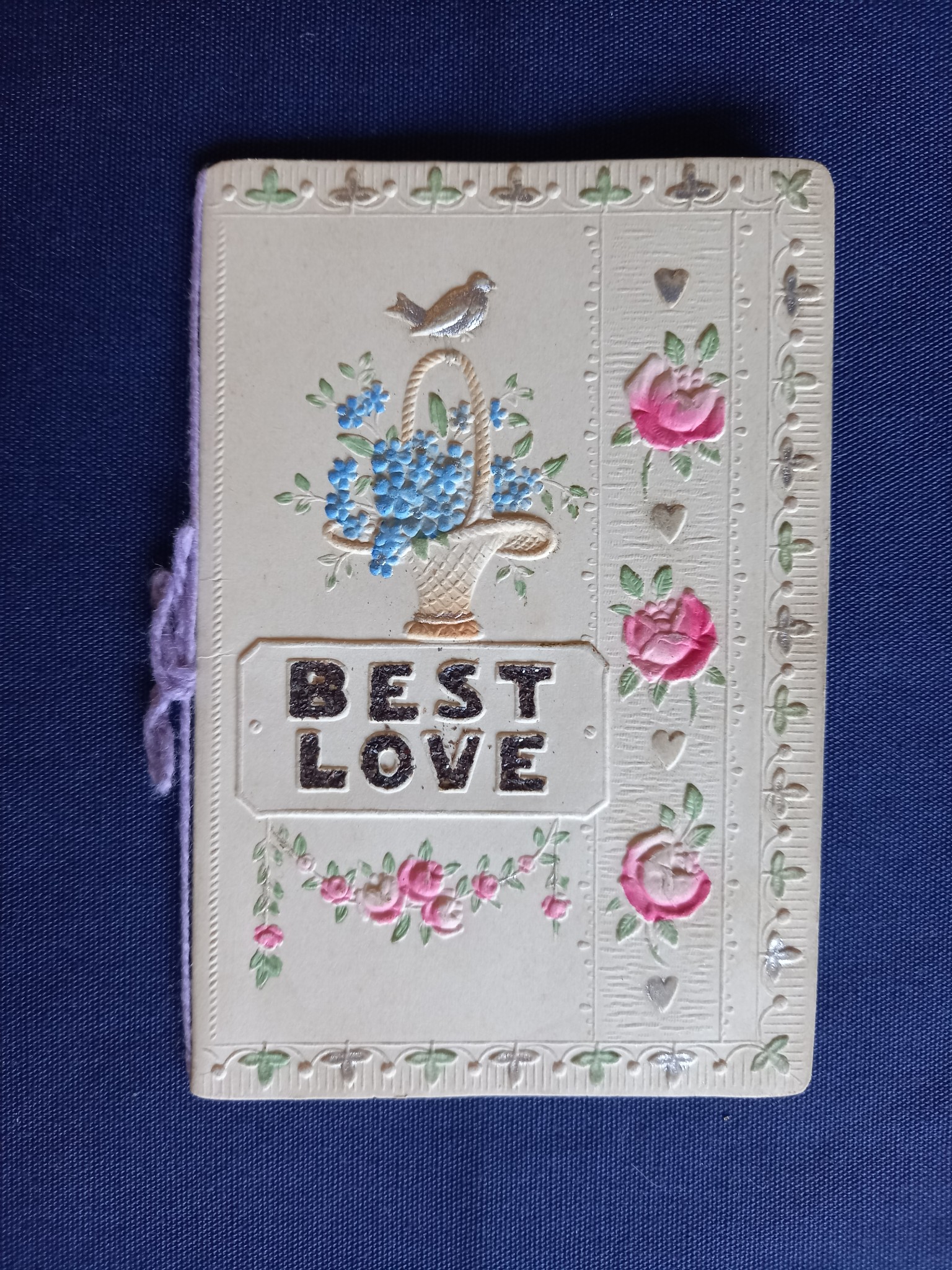
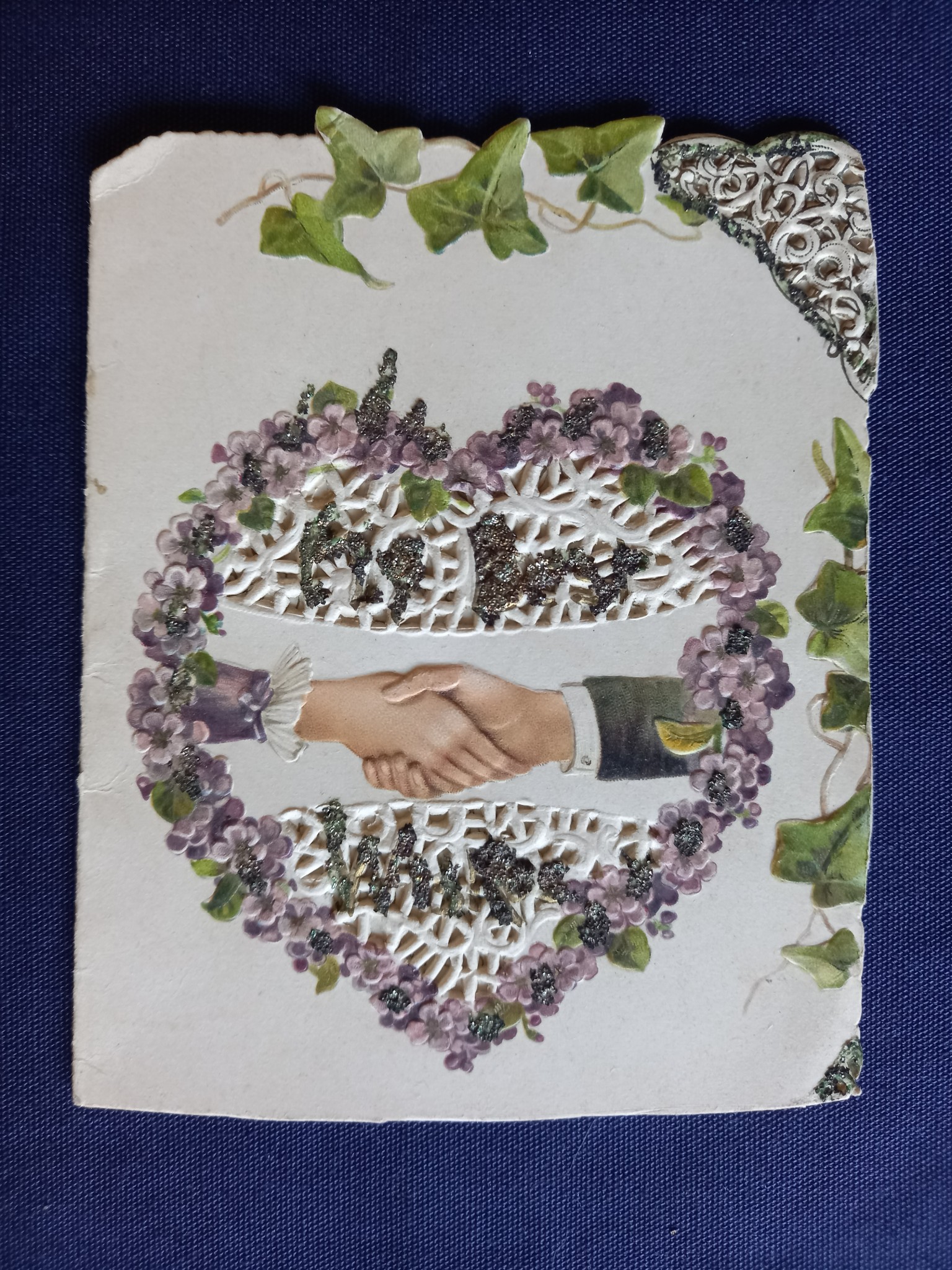
Greeting cards from the Brouster collection received from their family and friends - from the home of the Abernethy family who ran a shop in Brouster, at the Bridge of Walls.

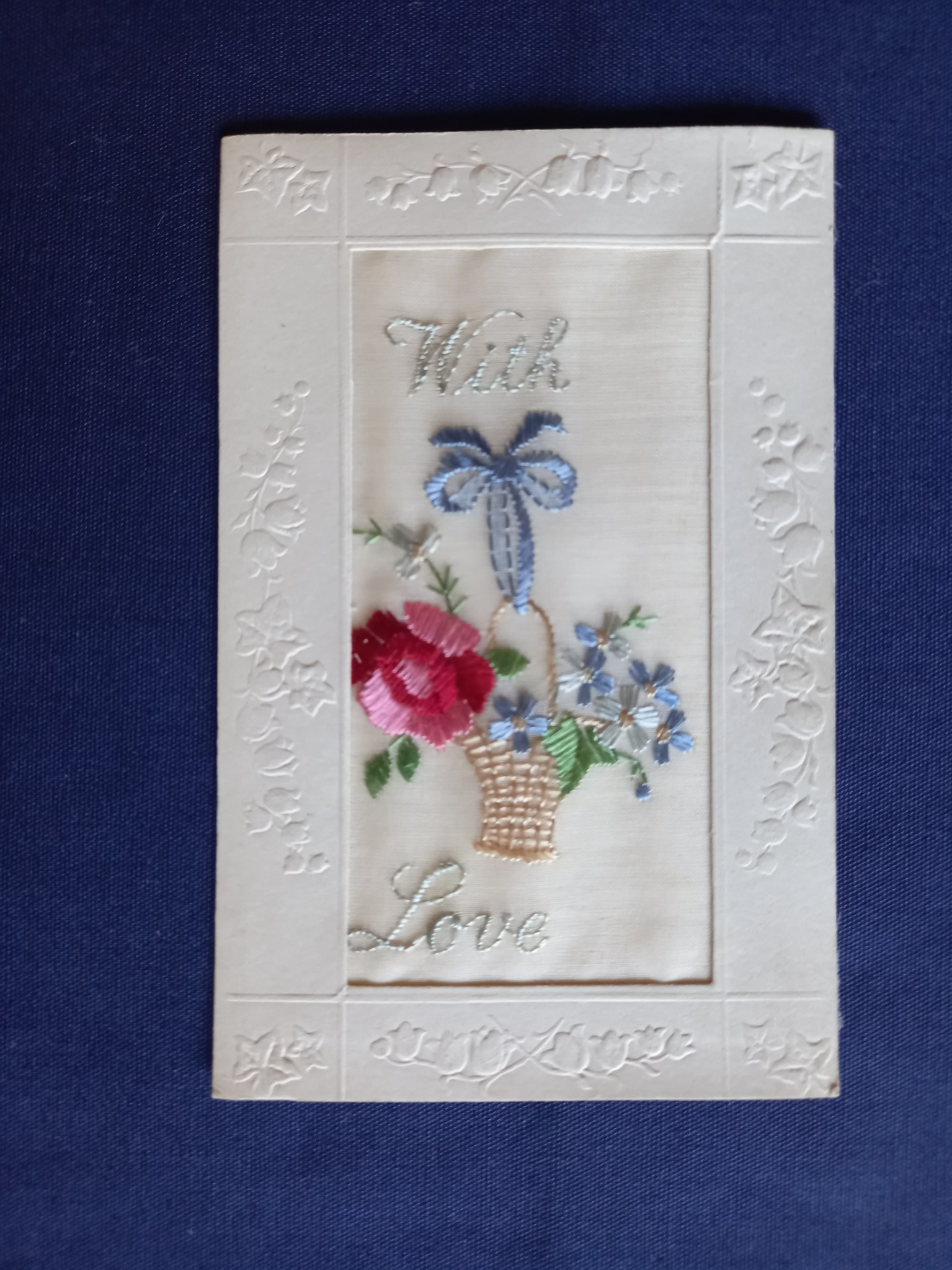
The last Valentine reference in the archives catalogue is in 2005, when the Shetland For Wirds dialect promotion group proposed a Valentine texting event, incorporating a new way of communicating. St Valentine’s Day has had ups and downs of taste, attention and presentation since reviving in the 1950s, but it shows no real sign of going away.
